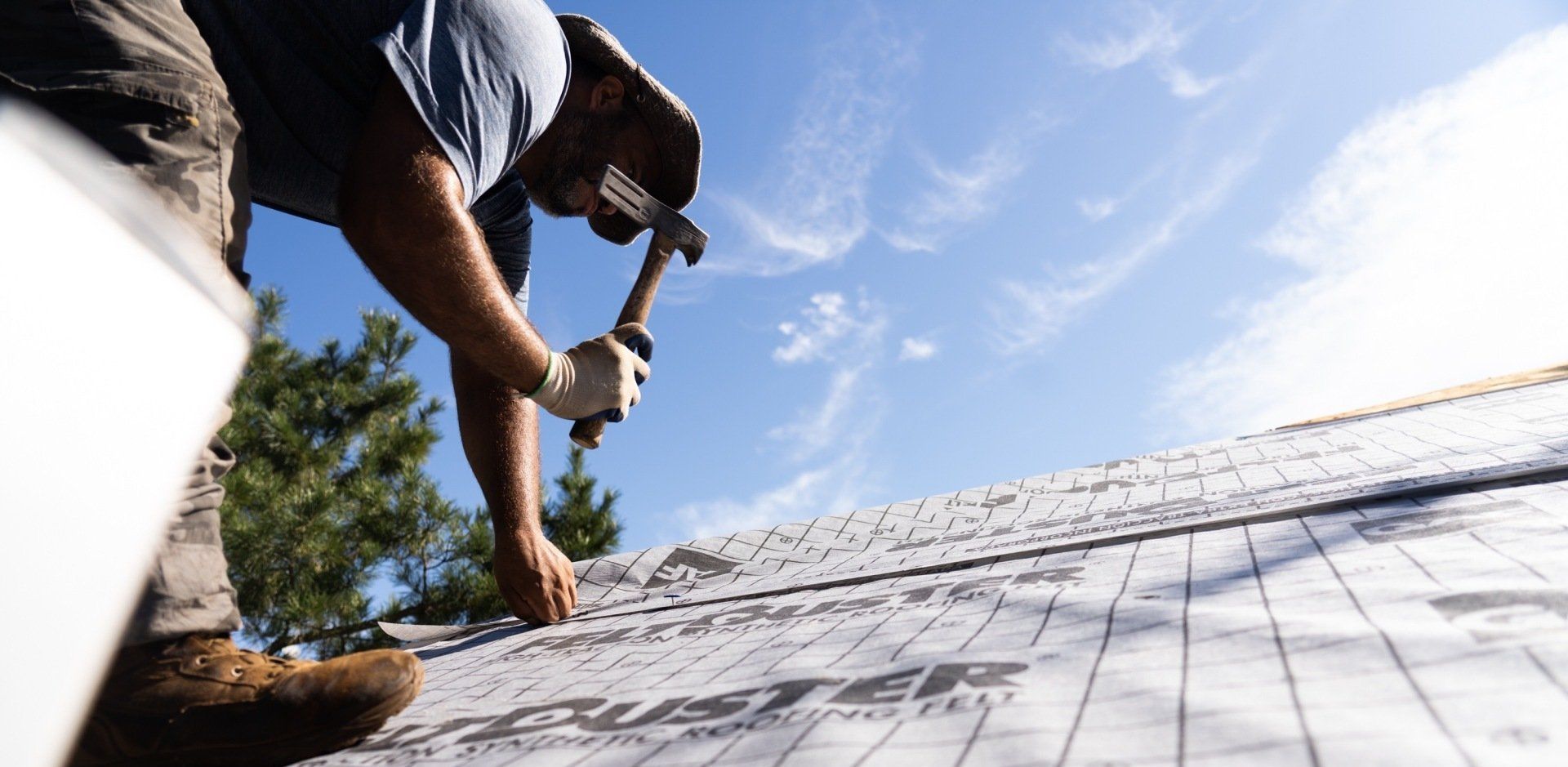Roofing 101 : Understanding the Basics
Having a high-quality roof is a fundamental aspect of any home or business as it offers protection against weather elements and guarantees the safety and comfort of its occupants. This is especially true in Texas, where extreme weather conditions such as heavy rain, high winds, hail, and even the occasional tornado can wreak havoc on a poorly maintained roof. A basic understanding of roofing can help you make decisions about your roofing needs and ensure your properties are adequately protected.
Types of Roofing Materials
- Asphalt shingle roofs are the most widely used type in Texas and for good reason. They are affordable, durable, and come in various styles and colors to fit any home's design. However, they may not resist extreme weather conditions as well as metal or tile roofs.
- Metal roofs are known for their durability, making them an excellent option for Texas's unpredictable climate. They also require less maintenance than other roofs but can be noisy during heavy rainfall.
- Tile roofs are popular in Texas because of their aesthetic appeal and excellent insulation. They can withstand extreme weather conditions but are also one of the more expensive options. While we don’t install new tile roofs at Birdcreek Roofing, we do repair and rebuild them!
Ultimately, the best type of roof for your property will depend on your budget and personal preferences. Contact a
Birdcreek Roofing consultant to help make the decision.
Common Roofing Terminology
Now that we've discussed the different types of roofing materials available, let's look at some common roofing terms you should know. While your Birdcreek Roofing consultant is the expert, it helps if you’re familiar with the terminology.
- Flashing is a thin layer of water-resistant material, typically made of metal, used to protect vulnerable areas of your roof, such as chimneys, skylights, vents, and valleys, which are more prone to water infiltration than other areas.
- Underlayment is a layer of material installed directly on top of the roof deck, underneath the roofing material. It plays a critical part in protecting the roof from water infiltration, improving its overall performance and longevity, and enhancing the energy efficiency of the building.
- Ventilation is what allows air to circulate freely throughout a building, including the attic and roof space. Proper ventilation is the key to maintaining a healthy and energy-efficient indoor environment and prolonging the lifespan of the building's roofing system.
Signs of Roof Damage
No roof is completely impervious to damage. That's why you should schedule regular roofing inspections with Birdcreek Roofing and always be on the lookout for some of these common signs of damage.
- Missing or cracked shingles: Shingles protect the roof from weather damage, and missing or cracked shingles may leave your roof susceptible to leaks and further damage.
- Damaged flashing: Flashing seals the gaps and protects against water infiltration. Damaged flashing can cause water to seep into the roof and damage the underlying structure.
- Water stains on the ceiling: Water stains on the ceiling are a clear sign of roof leaks and should be addressed immediately to prevent further damage.
- High energy bills: If your energy bills are consistently higher than usual, it could be a sign that your roof is not appropriately insulated or ventilated, leading to increased energy consumption.
It is crucial to contact one of our professional roofing consultants if you have noticed any signs of roof damage. We can assess the extent of the damage and recommend the necessary repairs.
Maintenance Tips for Texas Roofs
Maintaining any roof is essential to ensure it lasts as long as possible. Here are some easy things you can do to keep your roof in good condition:
- Cleaning gutters: Regularly cleaning out your gutters and downspouts can help prevent water from backing up onto the roof and causing damage to the shingles or roof decking.
- Trimming nearby trees: Trees that are too close to your roof can cause damage from falling limbs or branches and promote the growth of moss and algae on the roof. Trimming back any trees that overhang or touch the roof can help prevent this damage.
- Monitoring for signs of damage: Keep an eye out for signs of damage, such as water stains on the ceiling and missing or cracked shingles. Promptly addressing any issues can help prevent further damage and prolong your roof's life.
- Above all else, you should make sure to schedule regular inspections. Birdcreek Roofing consultants will identify potential problems, preventing them from becoming more severe and costly to repair.
Understanding the basics of Texas roofing is essential for anyone looking to protect their investment and ensure the longevity of their roof. From the materials used to the importance of proper ventilation and maintenance, knowing what to look for and how to address issues can make all the difference in the lifespan of your roof.
By working with a Birdcreek Roofing consultant and staying vigilant about maintenance and repairs, you can help prevent costly damage and ensure that your roof stays in good condition for years. Remember, a healthy roof means a healthy home!
Contact us
to schedule a free roof inspection today!
Talk With a Roofing Consultant
Fill out the form below and one of our roofing consultants will be in touch with you within 24 hours.
Blog Page
We will get back to you as soon as possible
Please try again later
Main Office
2608 N. Main St, Ste B-313
Belton, TX 76513





Get Your Free Inspection
You can call us 24-hours a day, 7 days a week.
Main Office
2608 N. Main St, Ste B-313
Belton, TX 76513
Call
Navigation
Services
Working hours
- Monday
- -
- Tuesday
- -
- Wednesday
- -
- Thursday
- -
- Friday
- -
- Saturday
- -
- Sunday
- -
All Rights Reserved | Birdcreek Roofing



